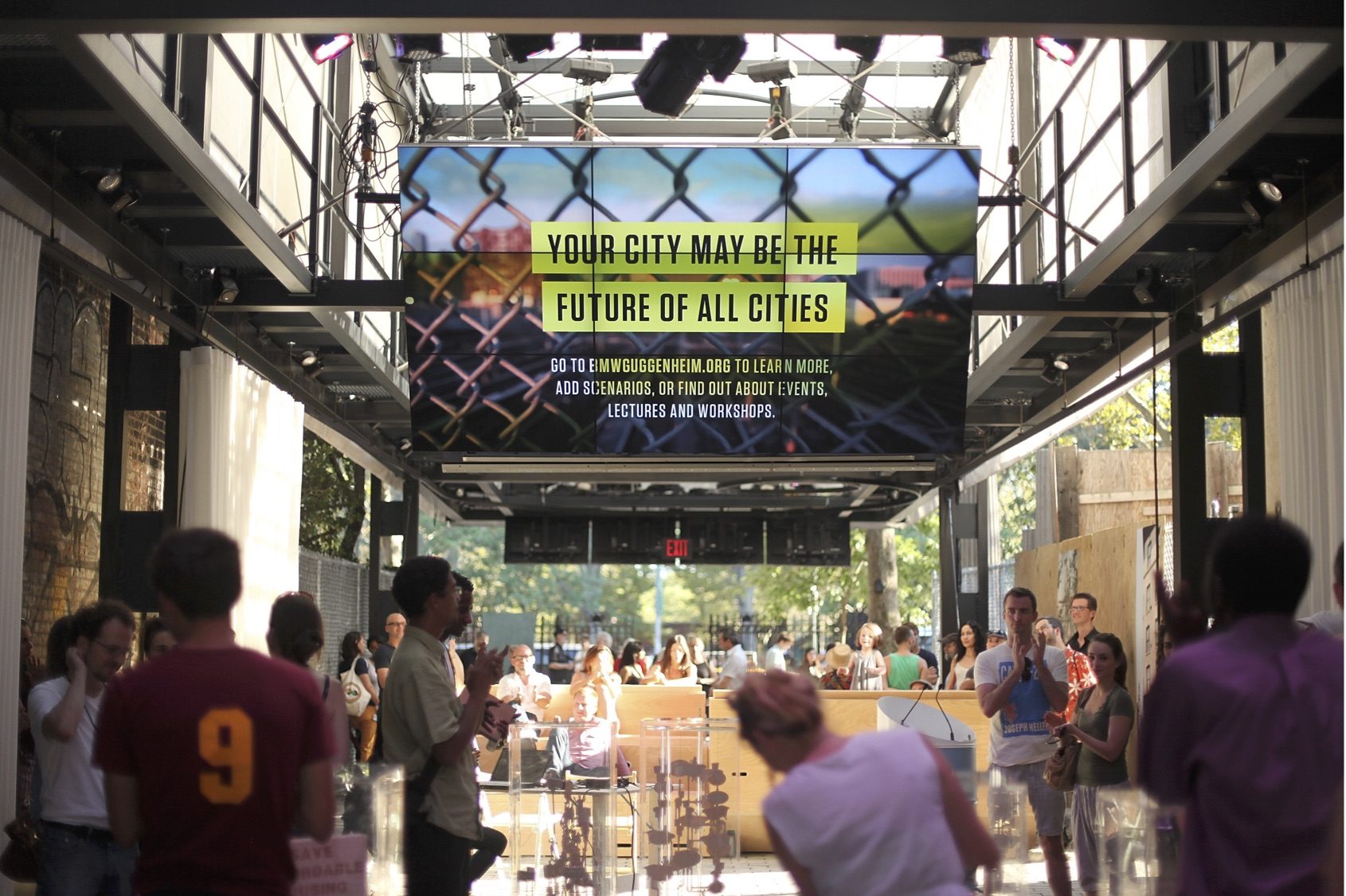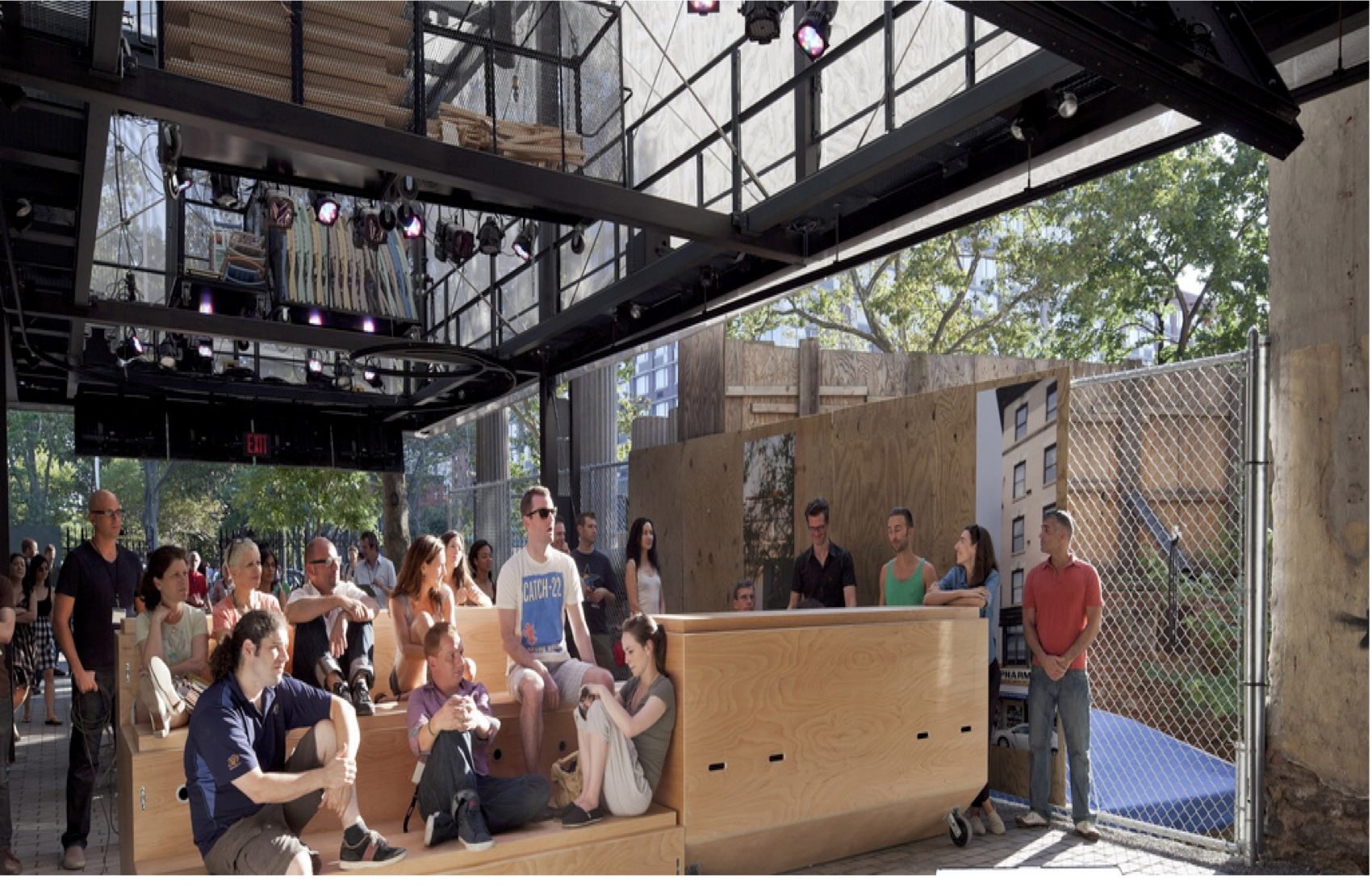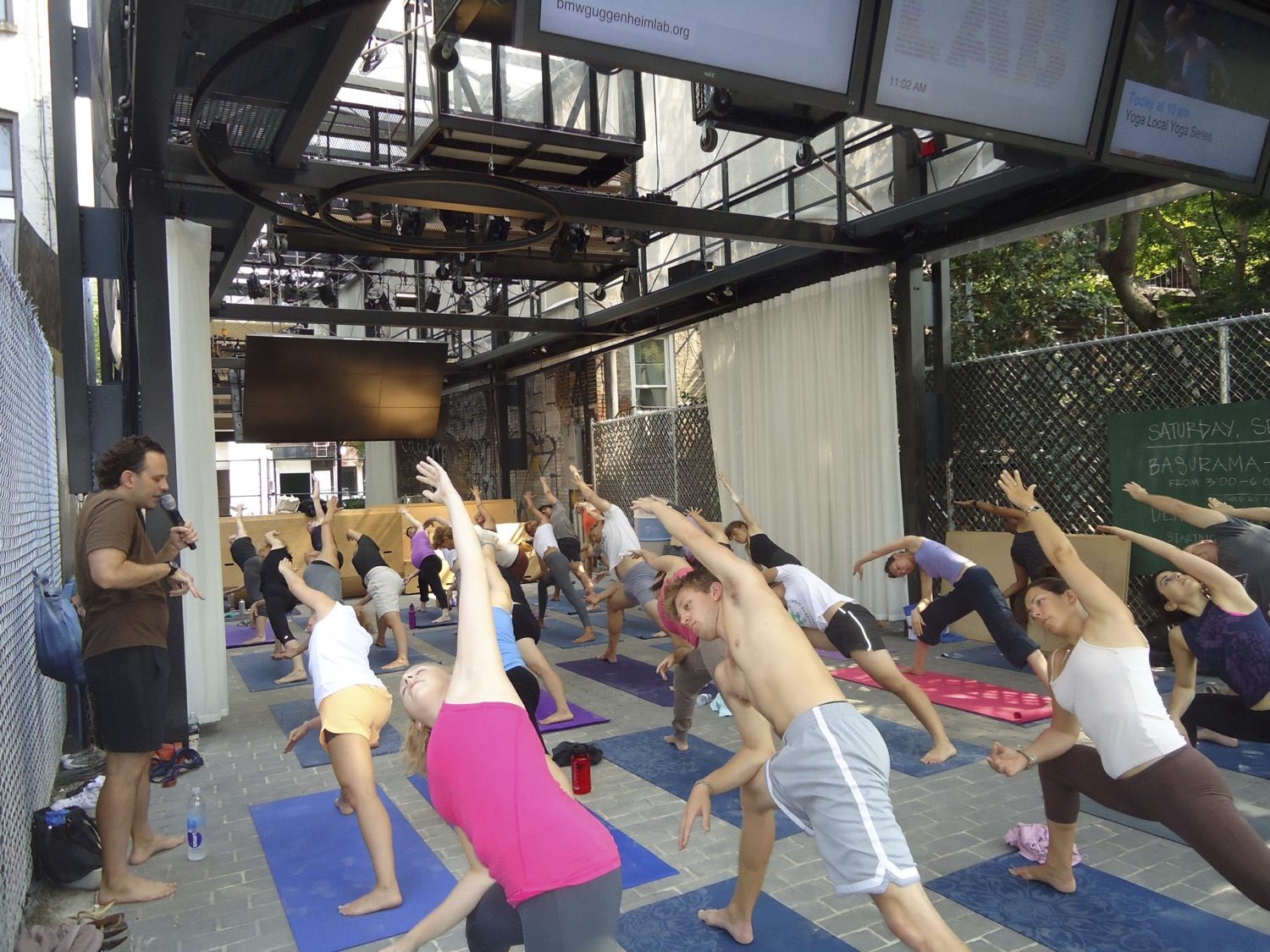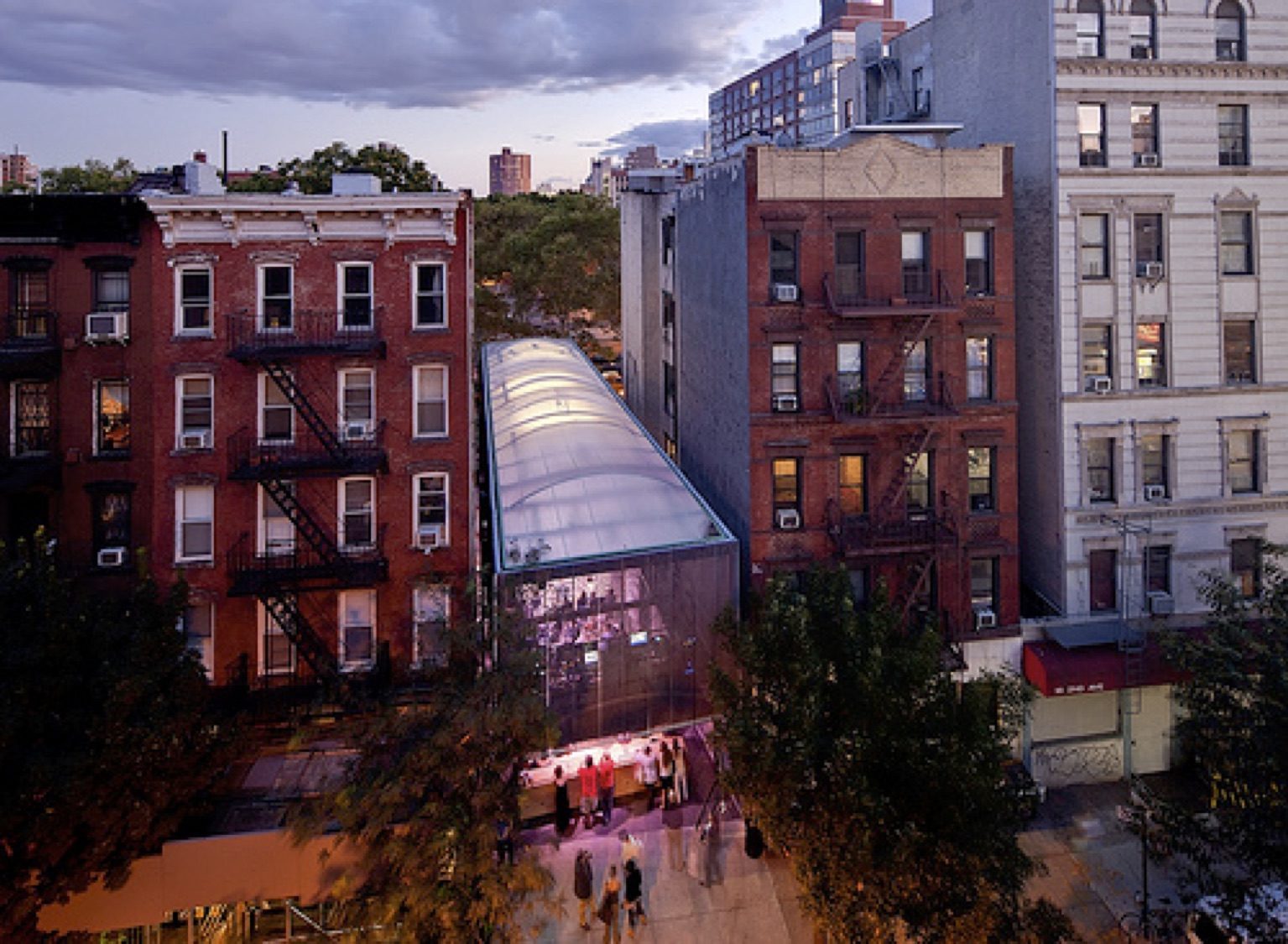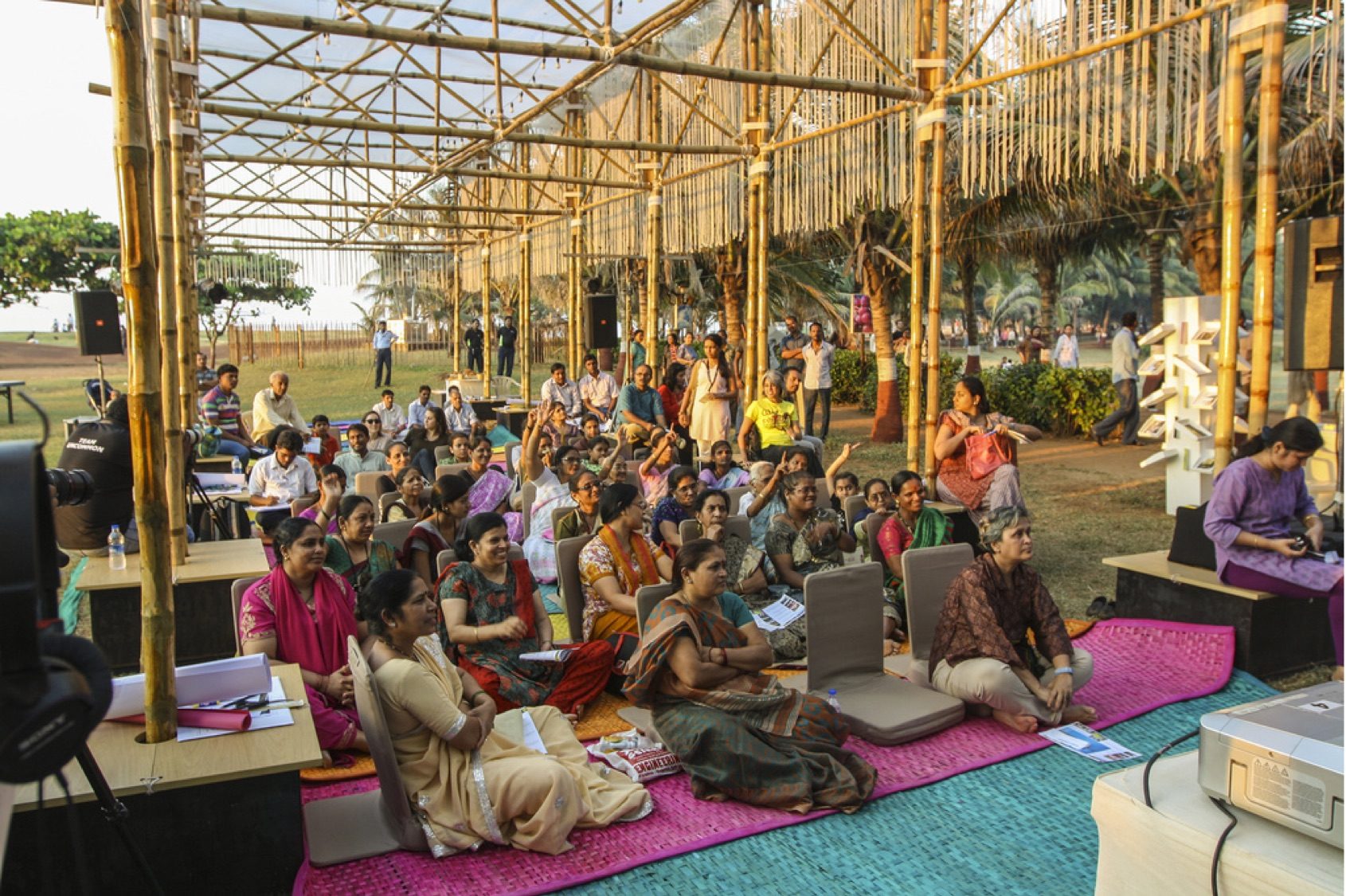BMW Guggenheim Lab

Panel on citizen-led placemaking initiatives in Berlin. Image courtesy of Solomon Guggenheim Foundation.
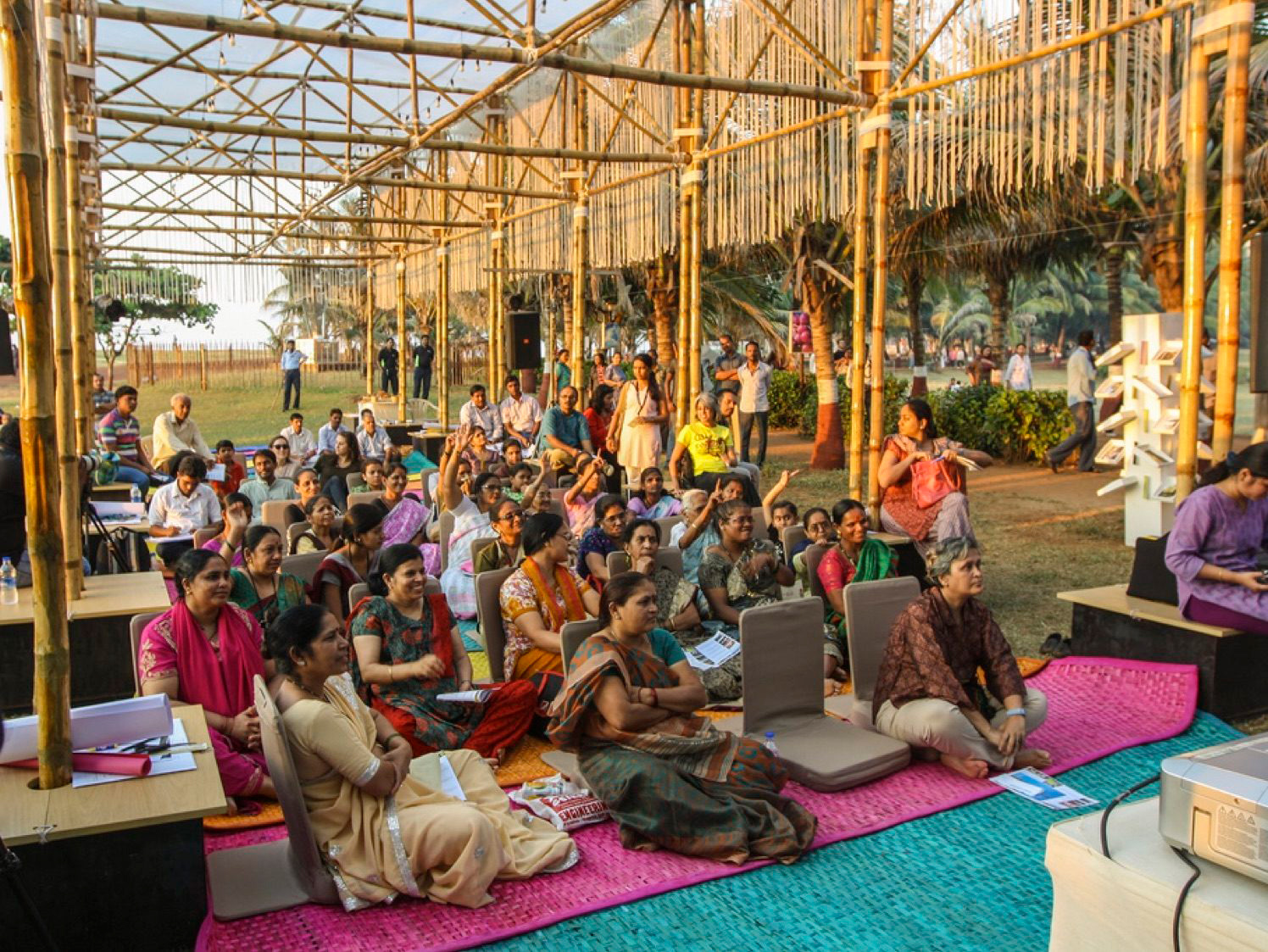
Event about public and private space in Mumbai. Image courtesy of Solomon Guggenheim Foundation.
The BMW Guggenheim Lab was a mobile laboratory about urban life that began as a co-initiative of the Solomon R. Guggenheim Foundation and the BMW Group. From 2011 to 2014, the Lab traveled to New York, Berlin, and Mumbai. Part urban think tank, part community center and public gathering space, the Lab’s goal was the exploration of new ideas, experimentation, and, ultimately, the creation of forward-thinking visions and projects for city life.
Led by international, interdisciplinary Lab Teams—groups of emerging talent in the areas of urbanism, architecture, art, design, science, technology, education, and sustainability—the Lab addressed issues of contemporary urban life through free programs, projects, and public discourse.
The architecture of the BMW Guggenheim Lab structure was designed to be responsive to the cities the Lab visited. For the New York and Berlin Labs, Atelier Bow-Wow created a lightweight and compact design described as a “traveling toolbox,” with a structural skeleton built of carbon fiber.
The structure’s lower half was a present-day version of the Mediterranean loggia, an open space that could easily be configured to accommodate the Lab’s various programs ranging from a formal lecture setting, to a stage for a celebratory gathering, or a workshop with tables for hands-on experiments. For the Lab’s Mumbai presentation in 2012, Atelier Bow-Wow of Tokyo, working with Mumbai’s SDM Architects, designed a structure uniquely suited to the densely populated environment of Mumbai.
Modeled after the Indian mandapa, a raised outdoor pavilion traditionally used for public celebrations and events, the Mumbai Lab structure was constructed primarily of bamboo and evoked a light, open, and transparent quality. A second traveling version of the Mumbai structure was also adapted for “pop-up” assembly at a variety of satellite sites throughout the city.
- – Intuitive assessments of cultural and institutional context
- – Horizon scans with qualitative and quantitative research and context interpretation
- – Future scenarios and impact assessment
- – Vision and mission strategies from moonshots to incremental change
- – Content and program ideas
- – Peer/competitive analysis
- – Interdisciplinary public and private expert workshops and think tank sessions
- – Space program and design brief development
- – Selection process development (invited commission)
- – Advisory Committee development
- – Team structuring (from project managers to capital campaign consultants)
- – Design reviews

Aerial view of Mumbai Lab, image courtesy of Solomon Guggenheim Foundation.
